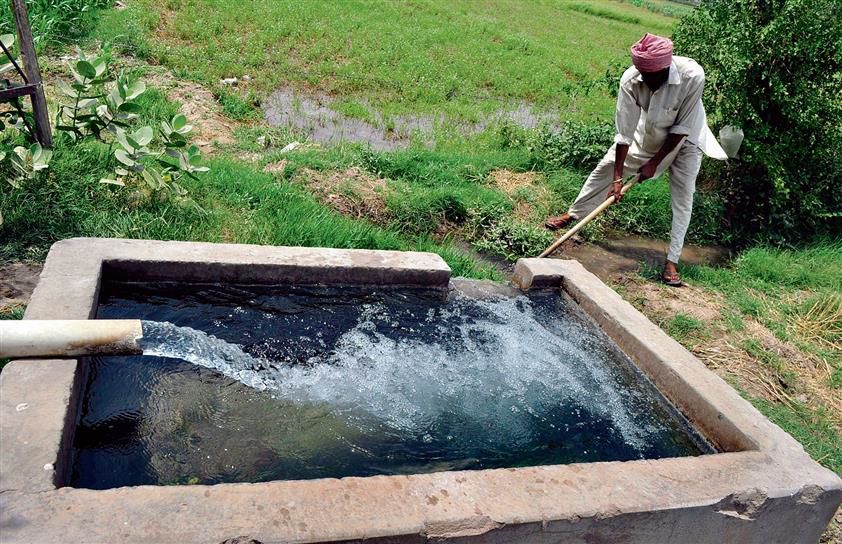In Parliament: Water table depleting fast in Punjab, 65% wells register fall
Nitin Jain
Ludhiana, July 24
The water table is depleting at an annual average of 51 cm in Punjab, the Centre has confirmed. This is even worse than neighbouring Haryana. The situation in Punjab is, however, better than that in Himachal Pradesh.
Of the 176 monitored wells in Punjab, 115 (65 per cent) have registered a fall in water level. In Haryana, 93 of the state’s 233 monitored wells (around 40 per cent) have seen a dip in water level. In Himachal Pradesh, water level has gone down in 72 per cent of the monitored wells. There are 81 monitored wells in Himachal and water level has gone down in 58 of them.
The data pertaining to Punjab was shared by Union Minister of State for Jal Shakti Rajbhushan Choudhary in reply to a question by Rajya Sabha member from Punjab Raghav Chadha during the ongoing Monsoon session of Parliament.
Raghav had sought data on the areas where the water table has depleted to alarming levels over the past few years in Punjab. He also wanted to know how the falling water table would affect paddy cultivation and subsequently farmers in the Malwa region and the measures initiated by the government to check water table depletion in Punjab.
Replying to the unstarred question, the Union Minister said the Central Ground Water Board (CGWB) monitored groundwater levels throughout the country, including Punjab, four times a year in April/May, August, November and January. To assess the long-term fluctuation in groundwater level in Punjab, the data collected by the CGWB in the state during November 2023 has been compared with the decadal mean of water levels for the month of November from 2013 to 2022.
He said the analysis of the data indicated that 65.34 per cent of the monitored wells had registered a fall in the groundwater level, while 34.66 per cent had shown a rise in the level. A total of 176 wells across 22 districts of Punjab were monitored for checking the groundwater levels on a regular basis.
Choudhary said no such impact assessment study data was available regarding the effect of falling water table on paddy cultivation and farmers in the Malwa region of Punjab.
However, the Centre and the state government have initiated several steps through various schemes to reduce groundwater stress in Punjab. “Water being a state subject, the efforts to effectively manage groundwater resources are primarily the mandate of the state government. The Union Government provides technical support and financial assistance through its various centrally-sponsored schemes and projects,” he said.
The Union Minister mentioned that the National Aquifer Mapping (NAQUIM) studies have been carried out in Punjab for an area of 50,369 sq km, based on which, groundwater management plans have been prepared and reports shared with state and district authorities for implementation.
“NAQUIM 2.0 studies are being carried out in priority areas of Ludhiana and Sangrur districts under the “poor quality” and “over-exploited area” categories, respectively, in Punjab to provide issue-based scientific inputs for groundwater management,” he said.
“The master plan for artificial recharge of groundwater has been prepared by the CGWB in consultation with states and UTs, which is a macro-level plan indicating various structures for different terrain conditions across the country, including the estimated cost,” he added.
Rise & Fall
176: Monitored wells in Punjab
115 (65.34%): Wells show fall in water level
61 (34.66%):Wells show rise in water level
(Source: Jal Shakti Ministry)









